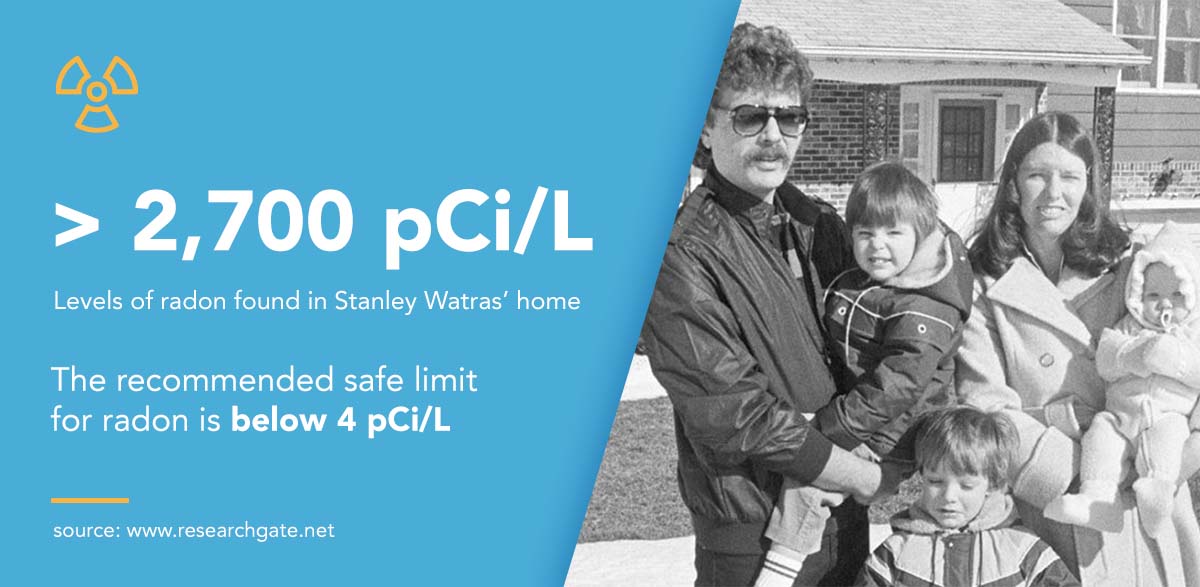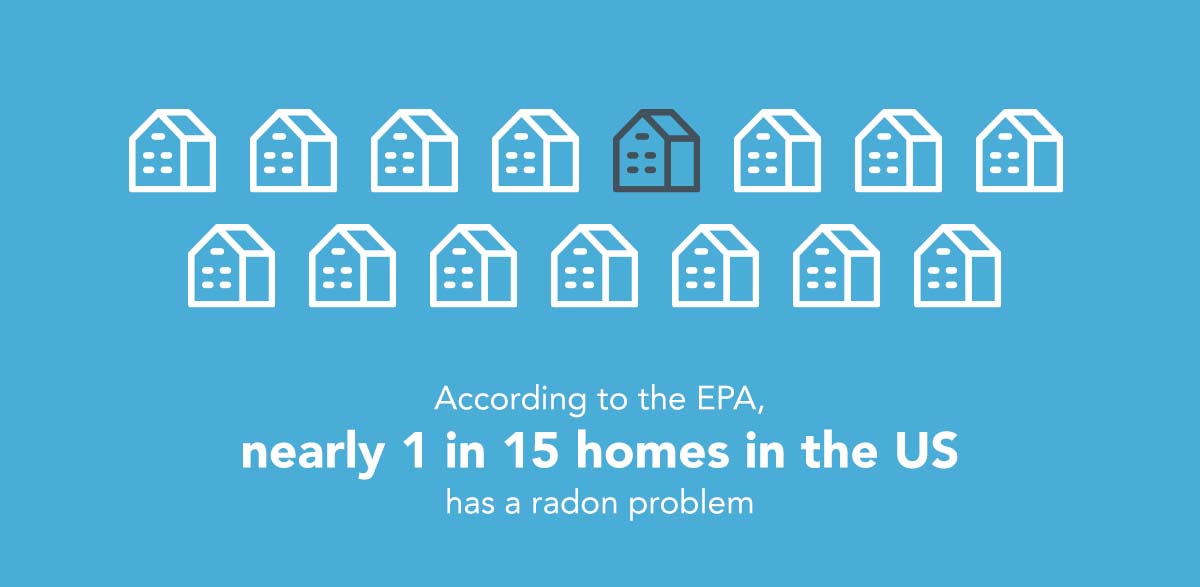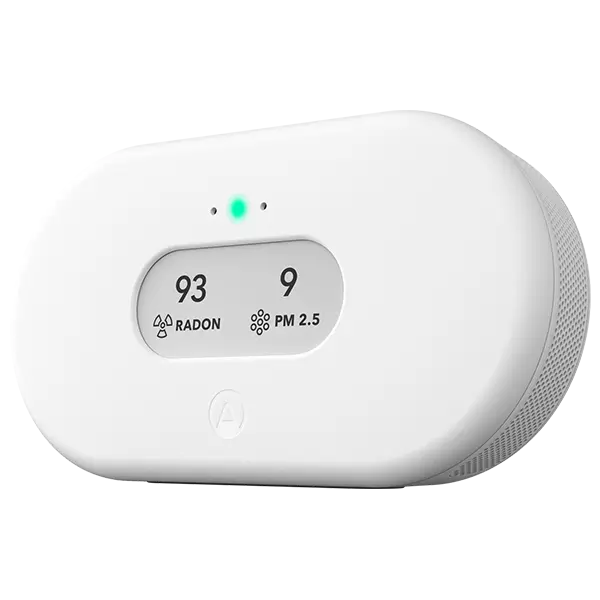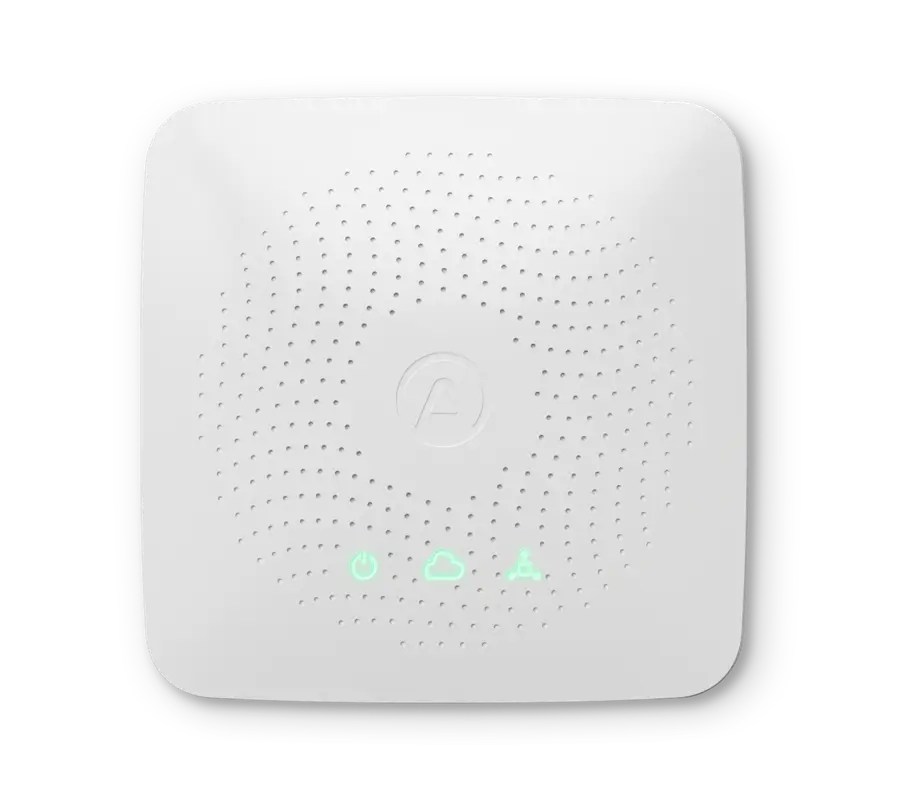It’s getting chillier, which means it’s time for radon season.
Summer is officially over in Pennsylvania. More and more people are closing their windows to keep the heat in; some have probably turned their radiators back on.
Unfortunately, it also means that indoor radon levels will generally be higher. As tenants and homeowners ventilate their homes less to conserve heat, more radon will be trapped inside.
And so, in time for Lung Cancer Awareness Month in the US and Radon Awareness Month in Canada, we thought it’d be fitting to share a few stories about radon and how people have come to realize its negative health effects.
What is radon?
Radon is a naturally occurring radioactive gas. It typically comes from certain elements under our rocks and soil, like radium1. The gas has no color, smell, or taste, so people can’t detect it by themselves2.
In theory, this isn’t a cause for concern. But because of the way modern homes and buildings are built, radon often gets trapped indoors. As a result, you risk exposure to higher concentrations of it, increasing your chances of getting lung cancer3.

What’s the history behind radon?
Radon was discovered in 1900 by a German chemist called Friedrich Ernst Dorn4, but at the time, nobody thought it was dangerous.
In fact, most even believed it had healing powers. Radium was commonly used as a treatment for cancer, but it was very expensive—so instead people turned to radon gas, its natural decay product, believing it had similar curative properties5. Some even visited radon “spas”6.
So how did people even begin to realize that radon was dangerous?
It all started with Marie Curie
As a prolific Nobel Prize winner, Marie Curie is famous for her discovery of radium and her championing of its use in medicine. However, she was also an advocate for regulations protecting against its potential hazards.
In 1929, Marie Curie was invited to speak at an annual dinner of the American Society for the Control of Cancer7. She was ill at the event, so she didn’t deliver her speech. Robert G. Mead, a member of the society’s finance committee, spoke on her behalf. Her speech was broadcast nationally on the radio, and one thing was clear: she wanted to warn people about the dangers of radium, despite its use as a treatment for cancer.
“I particularly would stress the fact that radium is dangerous in untrained hands,” her text read8.
Curie’s advocacy can also be seen through her other actions, like pushing for the use of lead screens and mandating blood tests for those who work with radium for a living.
Even though she never spoke about the negative health effects of radon, Curie undoubtedly helped spark discussions around the safety of radioactive elements, especially in the decades to come. Did you know that due to her work with radium, even after almost 100 years since her passing things like her papers, books, and furniture are still radioactive.
Stanley Watras’s radon-filled home: a startling discovery in ‘80s suburbia
Fast forward to 1984. One of the most noteworthy public health incidents in American history was the story of Stanley Watras, a construction engineer at the Limerick Nuclear Power Plant in Pennsylvania.
One day, Mr Watras set off a radiation detector upon leaving his workplace9. This caused the safety personnel to inspect him, but they couldn’t pinpoint the source of the radiation. The power plant was still under construction, and he was decontaminated at the end of every workday.
Upon further investigation, it was revealed that he had shockingly high levels of radon in his home. Over 2,700 pCi/L, to be exact10. For reference, the recommended safe limit for radon is below 4 pCi/L11.

This reading caused the United States Environmental Protection Agency (EPA) to step in and turn the Watras residence into a temporary radon-measuring lab, as Mr Watras and his family were forced to evacuate the premises.
After many months, public health officials managed to reduce radon concentrations to an acceptable level, and the Watras family was able to return.
This incident sparked a lot of change. By the 1980s, many people knew about the health implications of radon in mines, but the potential danger of radon exposure in homes was not yet an issue. Two years after discovering radon in the Watras residence, the EPA formally set an action level for the gas in indoor homes.
“You think your roommate is bad?”: a modern-day radon story from Reddit
Because of what happened with the Watras family, radon exposure is now a standard concern for homeowners and tenants.
In fact, a radon story on Reddit recently went viral13. In August 2022, a woman in Wyoming posted a question on r/legaladvice, an online community forum dedicated to legal queries and troubles. In her post, she explained that she lived with a roommate who kept a collection of clocks and old electronics in his bedroom.
After receiving a radon detector from a friend, she discovered that there were extraordinary levels of radon in her apartment (500 pCI/L in her bedroom, and 225 pCi/L in the living room).
When she confronted her roommate, he revealed that he had a cabinet full of radium paint vials, old US Army radium disks, and other radioactive items.
The woman then concluded the post by asking for advice on what she should do next. Some shocked commenters suggested contacting the authorities, as it’s not safe to simply discard the items in the trash. Others advised her to leave her home immediately, despite the fact that she had already signed a lease.
There’s been no update on this story since it was posted, so we may never know how the saga concluded.
Radon is still a concern, even today
As you can probably tell from these stories, the most worrying thing about radon is the fact that we can’t see the problem until it escalates.
For this reason most homeowners and tenants don’t even think about it. Yet, according to the EPA, nearly 1 in 15 homes in the US has a radon problem14. This is because we now live in houses and apartments that have less natural ventilation than ever before.

A century ago, people may have resorted to strange methods of radon monitoring (like entering mines with canaries in cages15). Today, all you need is one smart air quality monitor.
Sources:
1. https://www.cdc.gov/nceh/features/protect-home-radon/index.html
2. https://www.cbc.ca/news/canada/north/radon-gas-exposure-permafrost-1.6351615
3. https://www.who.int/news-room/fact-sheets/detail/radon-and-health
4. https://www.vdh.virginia.gov/radiological-health/indoor-radon-program/history
5. https://www.vdh.virginia.gov/radiological-health/indoor-radon-program/history
6. https://www.theatlantic.com/health/archive/2013/11/inside-a-radioactive-health-mine/281265/
7. https://physicstoday.scitation.org/do/10.1063/pt.6.4.20171107a/full/
8. https://physicstoday.scitation.org/do/10.1063/pt.6.4.20171107a/full/
9. https://evictradon.org/news/watras-was-the-story-behind-radon-testing-and-mitigation/
11. https://www.epa.gov/radon/what-epas-action-level-radon-and-what-does-it-mean
12. https://matracking.ehs.state.ma.us/Environmental-Data/radon/radon_lessons.html
13. https://www.reddit.com/r/legaladvice/comments/x2l9ap/wyoming_roommate_exposed_us_to_toxic_radon_gas/
14. https://www.epa.gov/radtown/radon-homes-schools-and-buildings
15. https://blog.scienceandindustrymuseum.org.uk/canary-resuscitator














%20(1).webp)

%20(1).webp)
